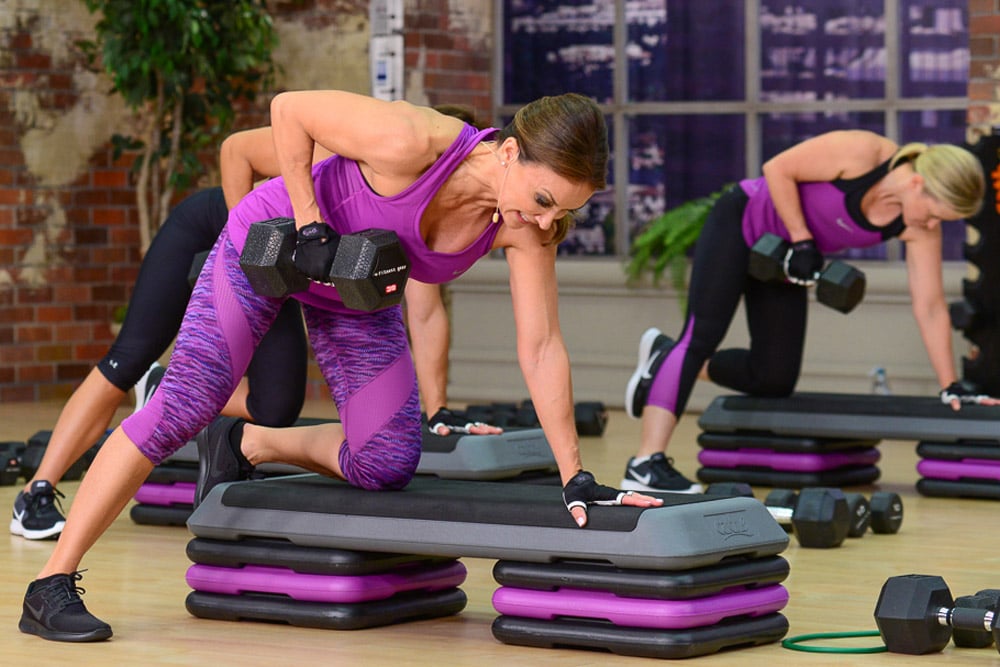Stretching is something most people do after a strength-training workout to lengthen tight muscles, improve joint flexibility, and help overworked muscles relax. Plus, it feels good too! Who doesn’t enjoy a slow stretch at the end of a workout? It’s a chance to unwind and reward yourself for a job well done.
These are all reasons to stretch once a workout is over, but what about stretching between resistance-training sets? Stretching between sets might sound counterproductive, after all, you’re training to build strength and muscle size. The stretching can wait until later! But before dismissing stretching during a workout, let’s look at what research shows about stretching and muscle hypertrophy. It could change your mind about stretching during a workout.
What a Study Showed about Stretching Between Sets
For the study, researchers divided a group of healthy, untrained individuals into two groups. One group did a conventional strength-training routine that included upper and lower body strength-training movements with a rest period between exercises, the routine most people do. The strength exercises included hamstring curls, quad extensions, seated rows, bicep curls, and triceps extension.
The other group did the same strength training sets, however, they replaced some of the rest time with static stretching between each set. Each group trained twice per week for 8 weeks and completed 8 to 12 reps. The rest period between sets was 90 seconds with the conventional strength training group resting the full 90 seconds while the second group doing static stretches for 30 seconds of the 90 second rest period.
Did stretching make a difference in muscle growth? When the researchers measured muscle hypertrophy for the two groups of strength trainers, they found that hypertrophy was greater in the group who did static stretches during the rest period between sets. In fact, one of the quad muscles, the vastus lateralis, experienced substantially greater hypertrophy in response to static stretching between sets.
How Stretching Boosts Muscle Size
Can you boost muscle growth by stretching between sets? It sounds intriguing, but how might stretching boost hypertrophy gains? It’s not clear, but there are some keys from animal studies. One study found that stretching increased the activity of protein kinase that interacts with the mTOR pathway. If you’re not familiar with the mTOR pathway, it’s the “head honcho” in terms of muscle growth because it turns on muscle protein synthesis.
When you strength train and consume amino acids, particularly branched-chain amino acids, it powers up the activity of mTOR and this pathway helps with muscle repair and muscle protein synthesis. So, if stretching activates mTOR, it’s a positive for muscle growth. But, remember, evidence that stretching turns on mTOR is mainly in animals. We don’t know for sure if this happens in humans but it merits more research.
Another theory is that stretching boosts muscle hypertrophy by loosening up the fascia that surrounds the muscle. Fascia is tough connective tissue and some experts believe it may limit muscle growth by reducing the ability of muscles to expand. Stretching may reduce some of the tension in the fascia, giving the muscle more room to grow. Another way in which stretching might aid muscle hypertrophy is by increasing blood flow to the muscles.
Should You Stretch Between Strength-Training Sets?
There are still questions about whether stretching between sets is universally effective for boosting muscle growth. For example, it may offer benefits only among untrained individuals, as the subjects in this study were. Whether the same applies to trained folks who have been strength training for a while is unclear. However, there are few downsides to trying it. if you’re looking for a way to break through a plateau, shaking up your routine with static stretches between sets might create an additional stimulus for growth.
One concern is that static stretching may reduce muscle performance. That’s why current guidelines don’t recommend static stretching prior to strength or power workouts as if could reduce the amount of force your muscles can generate. If that’s the case, stretching between sets might be counterproductive in the sense that it could limit how much force you can generate on the following set. If you find that stretching makes it harder to lift your usual amount of weight, it may be counterproductive, at least for maximizing strength.
Final Thoughts on Stretching
If you’re looking for a way to shake up your resistance-training routine, try static stretching between sets. The change could help you break out of a plateau by challenging your muscles differently. However, it’s an approach that needs more research to see if it works for trained and untrained individuals. In the meantime, start your workouts out with dynamic stretches, not static ones. But before doing your first dynamic stretch, warm your body up with whole-body movements that boost your heart rate such as high knees, butt kicks, or jumping jacks. Never stretch your muscles when they’re cold as it could increase the risk of injury.
What are dynamic stretches? In contrast to static stretches where you hold a stretch for 30 seconds or more, with dynamic stretching, you only hold the stretch for a few seconds but do the stretch repetitively. For example, you might use arms swings to warm-up and stretch your upper body and moves like air squats to stretch and warm up your lower body.
Static stretches after a workout is over still has benefits including reducing muscle tension, improving joint flexibility, and enhancing circulation. So, regardless of whether you static stretch between sets, do some gentle, static stretching once you’ve cooled down and your workout is over.
References:
· J Strength Cond Res. 2019 Jul;33 Suppl 1:S159-S166. doi: 10.1519/JSC.0000000000003036.
· Journal of Cell Science 2009 122: 3589-3594; doi: 10.1242/jcs.051011.
· Nature Cell Biology volume 21, pages63–71(2019)
· J Phys Ther Sci. 2014 Mar; 26(3): 341–344. Published online 2014 Mar 25. doi: 10.1589/jpts.26.341.
Related Articles:
Does Stretching Boost Muscle Hypertrophy?
What Role Does Mechanical Tension Play in Muscle Hypertrophy?
How Does Training Frequency Affect Muscle Growth?


